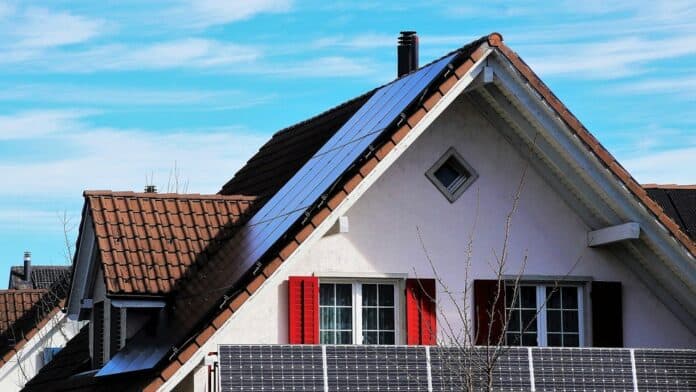Table of Contents
With the falling prices of solar panels – also called photovoltaics – plenty of available sunshine, and some great government incentives in Australia, going solar has never been more appealing. As a result, we’re naturally curious about the costs.
The price depends on numerous factors, including the size of the system, the type of panels, whether you want battery back-up for night-time or when the grid goes down, installation fees, and your eligibility for those government incentives.
This article will examine the factors affecting price so that you’ll know how much you can expect to pay for your photovoltaics.

How Much Do Solar Panels Cost?
The price of photovoltaic panels in Australia can vary significantly depending on the number of panels you need and your location. Not everyone considers location a factor, but it can alter the price significantly. This is because more remote areas will have higher shipping costs. Furthermore, locations with higher living costs will also have higher wages, contributing to higher equipment and installation costs.
Out of the places we examined, Perth, WA, had the cheapest small 3kW system at $3,370, while Sydney, NSW, had the cheapest large 10kW system at $7,970. The most expensive small system was found in Hobart, TAS, at $5,050; the most expensive 10kW system was in Darwin, NT, at $13,060.
| 3kW | 4kW | 5kW | 6kW | 7kW | 10kW | |
| Adelaide, SA | $3,760 | $3,910 | $4,610 | $5,300 | $6,370 | $8,530 |
| Brisbane, QLD | $3,700 | $4,540 | $$4,980 | $5,420 | $6,210 | $9,140 |
| Canberra, ACT | $4,510 | $4,760 | $5,150 | $5,810 | $6,770 | $8,770 |
| Darwin, NT | $4,730 | $6,780 | $7,760 | $9,320 | $10,060 | $13,060 |
| Hobart, TAS | $5,050 | $5,610 | $6,180 | $6,750 | $7,710 | $11,190 |
| Melbourne, VIC | $4,300 | $4,420 | $4,940 | $5,420 | $6,330 | $8,510 |
| Sydney, NSW | $3,850 | $4,230 | $4,700 | $4,880 | $5,920 | $7,970 |
| Perth, WA | $3,370 | $3,890 | $4,210 | $5,360 | $5,950 | $9,760 |
| All | $4,160 | $4,770 | $5,320 | $6,030 | $6,920 | $9,620 |
What Factors Influence the Cost of Solar Panels in Australia?
Even though photovoltaic costs in Australia are low compared to some countries like the USA, multiple factors will affect the final price tag. Let’s take a look.
Solar System Size
Of course, the size of the system plays a huge role in the costs, which makes sense. Smaller systems require fewer panels, resulting in lower costs than large systems that require more panels.
You must calculate your energy usage and consider other factors when you choose the best solar system for your household. If you have a large home or high energy needs, you’ll require more photovoltaics than smaller homes or those with lower energy needs. From there, there are numerous steps to set up photovoltaics, so it’s important to research it so you know what to expect.
Government Solar Rebates
Australia has a federal solar rebate system called the Small-scale Renewable Energy Scheme. This offers incentives in the form of small-scale technology certificates (STCs) that can be sold to regain a significant portion of your photovoltaics’ purchase and installation costs. How many STCs you get will depend on your location, when the system was installed, and how big it is.
Type of Panel
Not long ago, cheaper polycrystalline photovoltaics used to cost significantly less than the more efficient monocrystalline panels, so people often opted for polycrystalline even though their lower efficiency meant that you needed more panels to get the same amount of electricity.
However, that price difference is very small nowadays, so the price you pay for the additional panels you need to get the same amount of electricity will quickly eat up any perceived savings.
The other type of panel used is thin film panels, which are even cheaper but have the poorest conversion efficiency and are only used in large-scale solar farms. If you’re a homeowner installing photovoltaics on your roof, you’ll want to invest in monocrystalline panels since they boast a 23% energy efficiency and last the longest out of all three types.
On-Grid or Off-Grid
The other significant factor that will affect your price is if you want a grid-tied system where you can get away with just buying the photovoltaics and their mounting and wiring components. The downside of grid-tied systems is that you’re at the whims of the weather and other issues, leading to power outages.
If you want complete energy independence or to go off-grid completely, you’ll need solar battery storage systems so that you can still enjoy power at night or when your panels are not operating at their best efficiency. Depending on the battery capacity you need, this can significantly increase the costs.
For example, a standard home backup solution like EcoFlow’s DELTA 2 Max with photovoltaic panels that will run most standard household appliances costs about half of the EcoFlow DELTA Pro with its larger battery that will run virtually any household appliance for longer periods of time, even energy-intensive units like air conditioners and dryers when used off-grid.
However, buying your photovoltaics and battery bundled in one of EcoFlow’s DELTA Series Solar Generator packages can save you significant money compared to having to buy all of the components separately. For vans or tiny homes, EcoFlow Power Kits are another fantastic option for compact modular power.
What is the Average Cost of Solar System Installation?
The cost of installing photovoltaics can vary significantly with location, which makes sense since the cost of labour will vary, being higher in areas with higher costs of living and lower in areas with a lower cost of living. Here are some average costs of installation by location in Australia.
| State / Territory | Average Solar Installation Cost |
| New South Wales | $1,452 |
| Queensland | $1,766 |
| Victoria | $1,535 |
| South Australia | $1,248 |
| Western Australia | $1,352 |
Frequently Asked Questions
For an average 6kW solar system in Australia, you can expect to pay about $6,030 for the photovoltaic panels and about $1,470 for installation, for a total of about $7,500. Of course, your price will vary depending on the size and type of the system and where you are located.
Final Thoughts
Going solar is a fantastic way to generate your own energy, lessen your carbon footprint, and help mitigate climate change. What that may cost you will vary with the size of your system, the type of equipment, whether or not batteries are needed, installation fees based on local labour, and your eligibility for government incentives.
Of course, when you invest in an EcoFlow Solar Generator system that combines all the necessary components in one great package, you can save money compared to buying them individually. With a complete system like that, once you achieve your solar payback period and get a return on your investment, your electricity will be free for the rest of the life of your photovoltaics, saving you tens of thousands of dollars. So, despite the upfront cost, you will save huge amounts in the long run.


